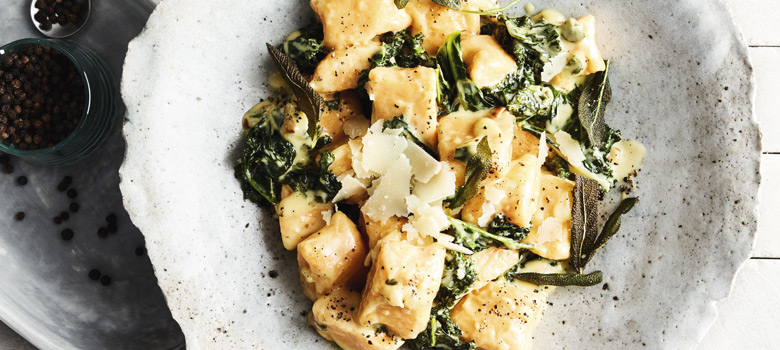
Food
Seasonal Sweet Potato
Well, this is confusing. Is it a yam? Is it a kumara? Is it a potato? Is it sweet? The answers (no, yes, no, yes and no) make the sweet potato perhaps slightly more confusing than it ought to be.
What is clear is that this root vegetable has recently found itself in the culinary spotlight. Touted as a ‘superfood,’ the focus appears to have something to do with sweet potatoes having a lower glycaemic index than potatoes, a bizarre and unfair comparison given, beyond the name, the two vegetables have little in common (and are certainly not related!).
That’s not to say the sweet potato hasn’t earned its place on the table (or in the glass) of many countries and cultures. In Pakistan, you’ll find the sweet potato ash-roasted in their street stalls, while on the streets of the Philippines, they are fried, coated with caramelised sugar and served on skewers. In Catalonia, Spain, they are served at the traditional Castañada on All Souls’ Day, where they will be roasted or baked and served alongside chestnuts, panellets (marzipan cookies) and Malvasia, a sweet wine.
a revered spirit
In Japan, it is in the production of shochu, an alcohol produced from fermented sweet potatoes, where this vegetable really shines. Favoured over sake by many, shochu is treated with the same reverence and attention to detail as a fine Bordeaux, the sweet potatoes will be grown especially for the production of this liquor – the variety, the farmer, the water used – are all carefully selected for the purpose. While shochu can be made with rice, barley or even chestnuts, honkaku imo-jochu is revered among connoisseurs (imo is the Japanese word for sweet potato, while honkaku describes its singular distillation, which helps it to retain the vegetable character at its base).
Across the pond, the sweet potato (or kumara) has long held an important place in Maori culinary culture. It’s a common ingredient in the hangi, the traditional pit oven, and it is thought that to “suck the kumara”, a New Zealand idiom akin to “kick the bucket”, has come about because the hangi and the sweet potato are both buried.
Beyond the kitchen, the sweet potato has been used to illustrate the sophistication of Maori agricultural techniques – as the sweet potato benefits from curing after it is harvested, the dating of underground storage spaces created for this purpose have helped to date their agricultural practices.
The kumara has also been used to date the relationship between the Americas and the Pacific Islands prior to Columbus. As it’s a member of the morning glory (bindweed) family, which is thought to be indigenous to South America, its historical presence in New Zealand was used to argue for an earlier trading period.
As for the ‘superfood’ title, I would like to think all fresh produce – anything grown rather than created in a lab – is deserving of the title; it is also deserving of much more than a confused dollop of sweet chilli sauce at your local pub.
Select and store
The smooth skinned tuber can have flesh ranging from beige through white, red, pink, violet, yellow, orange, and purple. Sweet potato cultivars with white or pale yellow flesh are less sweet than those with red, pink or orange flesh and also have less beta carotene.
Incredibly versatile, the sweet potato can be cooked whole (baked or roasted), or sliced (fried or barbecued) and peeled and chopped (boiled or steamed and mashed). Its flesh is soft and buttery, and, as the name suggests, slightly sweet – a little acid in the form of lemon can help mitigate this. In many countries they also eat the young green leaves and stems; they are delicious sautéed with garlic and soy.
Look for smooth, firm tubers with unbroken skin. Store in a cool, dark, well-ventilated place for up to two weeks. Avoid storing sweet potatoes in the fridge, as this produces a hard core and unpleasant taste. Being ethylene sensitive, sweet potato should be kept separate from ethylene-producing fruit and vegetables such as apples, tomatoes, bananas, etc.
Check out Lyndey Milan's wonderful sweet potato recipes here.
Styling by Matt Page, Food Prep by Julie Ballard.